The aircraft carrier is returning to the Portsmouth base for a brief logistics stop before returning to sea.
HMNB Portsmouth tweeted the following:
Around noon tomorrow we're expecting @HMSPWLS to return to base for a logistics stop, before heading back out again for a spell of carrier-focussed sea training. pic.twitter.com/qimwtX7N3y
— HMNB Portsmouth (@HMNBPortsmouth) May 25, 2021
HMS Prince of Wales recently tested her three Phalanx guns as part of efforts to make the vessel operational.
We have begun testing our 3x Phalanx guns today. Last week our Weapon Engineers spent a little time re-aquainting themselves with the systems. #PWLSatSea#EngineeringUK #Engineering pic.twitter.com/LVspMCVPzD
— HMS Prince of Wales (@HMSPWLS) May 24, 2021
Phalanx CIWS is a rapid-fire, computer-controlled radar and 20mm Gatling gun system and is the Royal Navy’s primary defence for ships against the threat of anti-ship missiles.
According to a Royal Navy news release:
“The Portsmouth-based warship has spent much of her first fortnight back at sea in the relatively sheltered waters of Lyme Bay conducting aviation trials with the RAF and Commando Helicopter Force.
The ship’s company has changed substantially since she last sailed in the spring of 2020 – and since her flight deck last welcomed helicopters, so it’s been a mix of brushing up on old skills and new experiences for a good number of sailors.
Those on the upper deck were treated to the impressive sight of a unique RAF Chinook, proudly sporting a Union Jack tail to celebrate its 40th anniversary in UK service, touching down. The Boeing-built helicopter entered service with the air force in November 1980 and has seen action in every major conflict involving the nation’s armed forces since.”
After the much-publicised first encounter at sea with her big sister HMS Queen Elizabeth, regular training resumed with Merlin helicopters of 824 Naval Air Squadron making use of the carrier to practise refuelling skills.


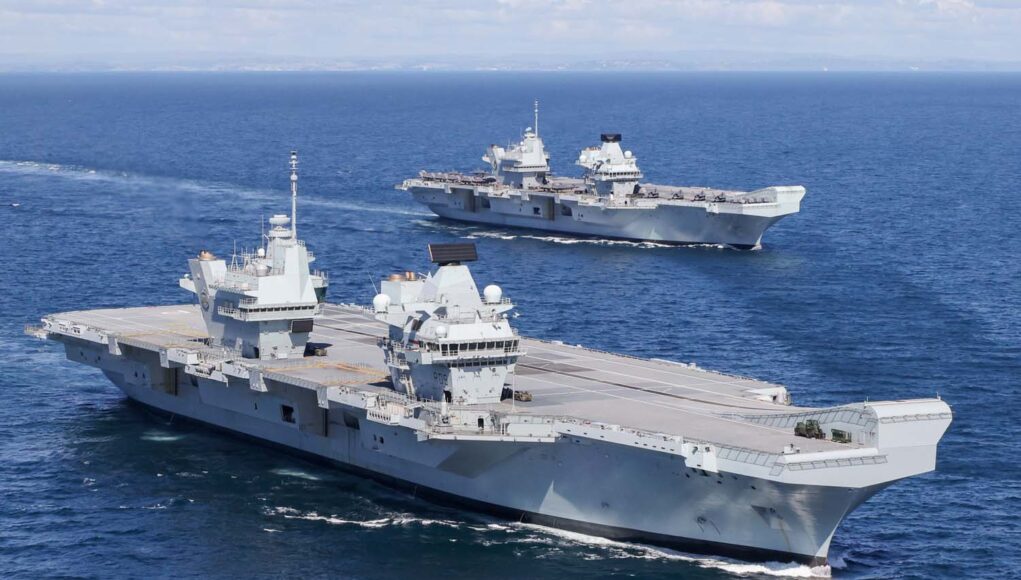
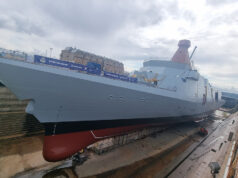


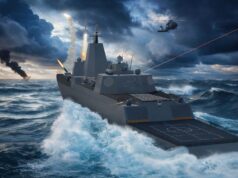
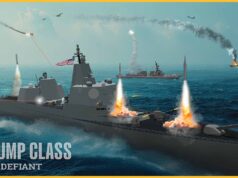



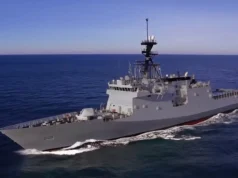

“Phalanx CIWS is a rapid-fire, computer-controlled radar and 20mm Gatling gun system and is the Royal Navy’s primary defence for ships against the threat of anti-ship missiles”….
ok, I’ll be the first one to bite.. 🙂
No it isn’t….
It isn’t; the Phalus CIWS not the primary defence? I wouldn’t be so “Cock Sure” about that!
Well, I’m looking forward to a spirited debate on escorts, soft kill, Sea Ceptor and Sea Ram etc. For the most part I do buy into the RN layered screening doctrine. But is there an issue when there is not the sea room to construct the layered screen?
I’m sure that a layered screen is advisable, especially if it is wafer thin and sensitol lubricated! 🙄
Multiple layers H, multiple layers 😉
Funny you should mention Phalanx, i read this on the Drive last night:
China Is Testing A Beastly 20-Barrel Naval Gatling Gun (Updated)
Pictures have emerged online that indicate testing of a new and absolutely fearsome-looking naval point air and missile defence system has been going on in China since January. The available images show that this weapon system notably features a Gatling-style rotary cannon with a whopping 20 barrels, nearly twice as many the largest close-in weapon system, or CIWS, now in service with the People’s Liberation Army Navy, or PLAN.
The pictures, which first emerged on Chinese micro-blogging site Weibo and are now circulating on social media, indicate that this system has already undergone at least three rounds of live-fire tests, in January, March, and April of this year. It is unclear what entities might be involved in the design of this weapon and whether it is expected to lead to an operational system or is simply a proof of concept.
https://www.thedrive.com/the-war-zone/40713/china-is-testing-a-20-barrel-gatling-gun-naval-close-in-weapon-system
Interesting. Thx. This would validate the Gatling design philosophy. I would value some kind of overview of CIWS ..pros and cons etc. Bit like a piece of string though I guess since some weapons are multi function.
And the point of this is what?
The point is that now 2 nations that have mastered hypersonic weapons are now going for massive rate of fire CIWS.
The point is the Phalanx is no defense at all against China or Russia.
Mastered hypersonic is bit rich, I’ve seen very little proof from Russia, could just be properganda like hordes of armata tanks and new carriers
I agree! But then don’t be to hasty, remember Mother Russia’s The last invasion Boss made same mistake taking Moscow to be easy, And as the German Generals stood in the snow, jaws dropped! Masses of Russian Armour over night, that forgot Eastern Industrial might! The saying expect the unexpected is most definitely adhere too! Belarus Dictator, never planned the hijack!
Hence no winners until the Fat Lady Sings.
The point is a design concept, the realty is it would never be able to fire continuously for a minute, therefore dispersal pattern of the rounds is more important than how many rounds you can put down range.
Ok! They must remember to sybmit chatty for extra ammo, stores are going to deplete very very quickly, then what do they rearm with…. OF COURSE ? CHOP STICKS. NO SUPERGLUE HERE ?
Well I am sure the PLAN know what they are doing better than you. If the start arming their vessels with guns that can fire 20k rounds a minute we can be fairly sure they have considered the implications.
Don’t underestimate them.
Hi farouk,
Interesting to note that the picture on the left of the three at the top of that article shows that both the top and bottom barrels are firing at the same time. So there is a x2 on the rate of fire compared to phalanx right there. If it rotates at the same rpm as the Phalanx then there is another better than x3 increase because of the number of barrels. So potentially better than x6 rate of fire. Obviously, some big assumptions underpining those back of a postage stamp sums, but they give an idea of the possible noise it’ll make.
They are going to need big magazines for than thing. It looks bigger and heavier than Phalanx so perhaps they our developing for their planned big ships (cruisers and carriers)?
Cheers CR
When does the carrier become operationally deploy able
Hi Nic,
From the ships perspective when the crew is fully worked up to operate, maintain and fight the ship. Then of course there is the need to equip and train another air wing if you want two fully deployable operational carriers.
However, the primary aim from the start has always been to maintain one fully operational carrier strike group. Recently, the talk has been to use the PoW in secondary roles such as training and trials for the RN’s autonomous vehicles that it is trying to fast track into service. When the QE goes in for her first refit, then PoW steps up as primary carrier, maintaining the CSG capability. Given the fact that the crew should be fully trained the transfer of the air wing should be reasonable quick (recognising the need for some R&R of course).
So I would suggest that the ship will be a fully capable carrier long before she is actually deployed as such, i.e. her equipment and crew will be up to scratch and ready to go if needed. Sounds a bit wasteful, but it does mean the RN will not be face with long periods of having no carrier as the French Navy currently does whenever the CdG goes in for one of her long refits and safety checks on her reactor(s).
If and when we get enough aircraft then it is likely that there will be occasions when we have two CSG’s but not for quite a few years yet I would suggest.
Of course they could use the PoW as an interim commando carrier just for forms sake, but I, like many others on here, am not convinced that it is a good idea to put a 60,000 carrier in close to a potentially defended coast to land marines, especially if there are coastal missile batteries around.
Sorry that got a bit long winded 🙂
Cheers CR
Thank you for the reply
She would be further along that road had she not lost c6months repairing flooding problems. That stopped her going to the U.S.East coast to qualify for F35 ops. Once the crew is worked up again after being stuck alongside for months she should soon be heaading off to the U.S. for that, If I’ve got it right. Once that’s acheived she should be able to do most what she’s designed for.
I wonder if they have trialled all the uk forces helicopters including Apache
There seems to be some misunderstanding on how Phalanx works.
It doesn’t track the target and then randomly chuck bullets out in the vainglorious hope of hitting something.
It tracks identifies the target,carries out Threat Evaluation and Weapon Assignment (TEWA)to determine the best point in time to fire if at all (The target may be crossing so why shoot at it ?), tracks the target, fires, tracks the bullets in flight , works out the difference in space between the bullets and the target and drives the mount in training and elevation to reduce the difference to zero.
On reaching zero or very near to it you will be putting rounds onto the target.
You don’t need a non-stop random burst of fire, the system does relatively short bursts because the accuracy is self correcting to a zero miss distance.
You don’t actually need a zero miss distance anyway. Putting a specific number of rounds within a specific miss distance is assessed by the mounting systems as having achieved a hit and a mission kill and the engagement switches to the next highest threat target. Don’t bother to ask what the number of rounds or miss distances are… that is classified.
Assuming the target is not maneuvering or indeed tracking the bullets itself. The time of flight of the rounds give the target time to move out of the way.
So now we need maneuvering rounds to strike maneuvering missiles.
It’s a very tight closed loop tracking system. It constantly measures the bullets positions in space, simultaneously measures the targets position in space and drives the mount to reduce the difference between the two to zero.
Manouvering makes no difference.
If the target moves the mount adjusts its point of aim accordingly.
It doesn’t fire a burst do the measuring and calculations then fire again… It measures and adjusts constantly bullet by bullet milli second by milli second.
Indeed, but once the round is in the air, it’s trajectory is fixed, giving the target a window to avoid it.
As you can see from this night time video the time of flight is significant, giving plenty of opportunity for evasive maneuvers.
https://www.youtube.com/watch?v=J087UXUt6BM
And of course, Phalanx can only engage a single target at a time, a paltry force of hypersonic cruise missiles would instantly overwhelm them.
Not to mention their utter uselessness against maneuvering ballistic missiles which presumably would be arriving at the same time.
The time of flight is not that long. I know of no missile past or present that senses incoming phalanx rounds or any other rounds and avoids them. If it did somehow detect and then maneuver to avoid them it would need to do a high G pop up or a left /right shift. If it does that at supersonic speeds it would miss the target. Harpoon does a pop up but its very sub sonic and so is still hittable which is why the RN went for it stepping down in attack height to get as low as possible in the terminal phase.
A mount engages a single target. It then switches to the next highest threat. Not including in all this is all the other hard kill and soft kill measures happening. Hard kill missiles would have been going out way before phalanx has to engage. The ship would be maneuvering hard to get out of a homing head basket and be presenting its most favourable( stealthiest) profile to any missiles . Soft Kill distraction and seduction chaff, Off board jammers, Seduction floating decoys, onboard jammers, IR decoys in the air and on the surface would all be deployed. ASM defence is a system of systems game and is not reliant on just one thing.
Goodluck to anyone hitting a MARV ballistic missile with anything…even Standard/Viper missiles would be hard pressed. However a top diver ASM is hittable as Phalanx covers the hemispherical arcs. The mount can elevate backwards past 90 degs. A 76 or 5″ mount is limited to around 80deg elevation so it can never engage a top diver.
A missile can know where the rounds are by a simple calculation based on when the Phalanx fires, its own trajectory at that time, and the speed the round travels at.